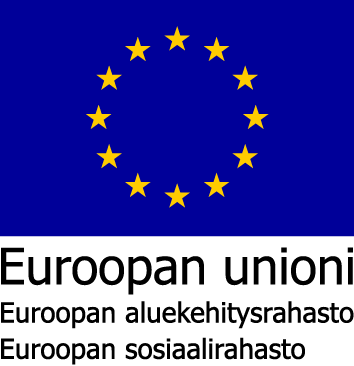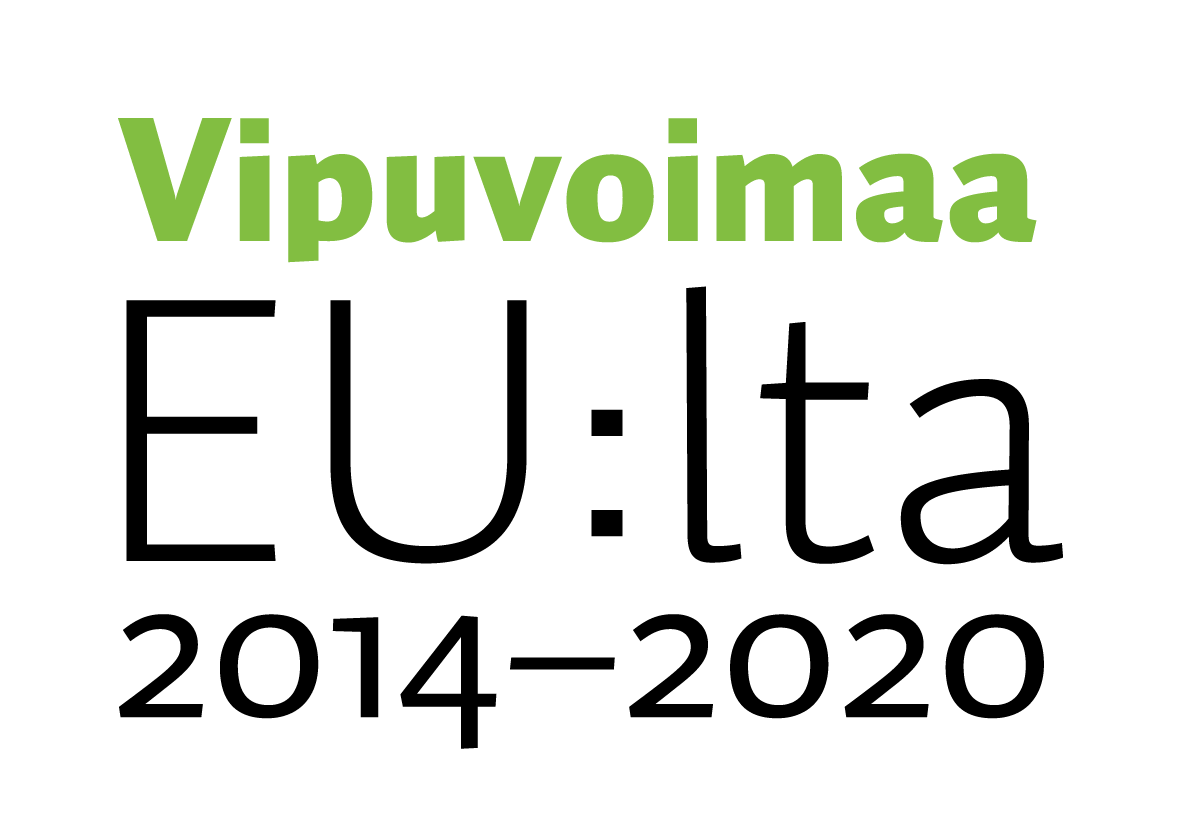

 |
 |
Hankekoodi: S21317
Hankkeen nimi: Tsemppaa hyvä fiilis
Toimintalinja: 5. Sosiaalinen osallisuus ja köyhyyden torjunta
Erityistavoite: 10.1. Työelämän ulkopuolella olevien työ- ja toimintakyvyn parantaminen
Suunnitelman mukainen toteutusaika: Alkaa 1.8.2018 ja päättyy 31.7.2021
Toiminnan tila: Toiminta päättynyt
Vastuuviranomainen: Etelä-Savon elinkeino-, liikenne- ja ympäristökeskus
Hakijan virallinen nimi: Diakonia-ammattikorkeakoulu Oy
Organisaatiotyyppi: Ammattikorkeakoulu
Y-tunnus: 0115776-3
Jakeluosoite: PL 12
Puhelinnumero: 029 469 6000 /vaihde
Postinumero: 00511
Postitoimipaikka: Helsinki
WWW-osoite: https://www.diak.fi
Hankkeen yhteyshenkilön nimi: Marina Steffansson
Yhteyshenkilön asema hakijaorganisaatiossa: Asiantuntija TKI
Yhteyshenkilön sähköpostisoite: marina.steffansson(at)diak.fi
Yhteyshenkilön puhelinnumero: 040-1988149
Hakijoiden lukumäärä tai tuen siirto -menettely:
TSEMPPAA HYVÄ FIILIS
NEET-nuoret (koulutuksen ja työelämän ulkopuolella olevat) ovat yleisemmin väliinputoajia palvelujärjestelmässä. NEET-status 17- ja 18-vuotiaana ennustaa myöhempää koulutuksen puutetta ja iän mukaista riskiä ongelmien kasautumiselle. Mitä enemmän NEET-vuosia kertyy, sitä todennäköisemmin nuori on vailla toisen asteen tutkintoa 22-vuotiaana. Koko maassa Neet-nuoria oli 8,3 % vuonna 2016. SOTE-uudistus edellyttää uudistuvia toimintatapoja hyvinvoinnin edistämiseksi kuntien ja kolmannen sektorin toimijoiden yhteistyönä ja siten tarve yhteistyön kehittämiseen erityisryhmän osalta korostuu.
Hankkeen päätavoitteena on kehittää uusi innovatiivinen toimintamalli NEET-nuorten aktivoimiseksi ja terveyden edistämiseksi. Mallin avulla edistetään kokemusta omasta hyvinvoinnista, terveellisistä elämäntavoista sekä osallisuudesta. Hankkeen toisena tavoitteena on vaikutusten ja kustannusten arviointi. Pitkän aikavälin tavoitteena on ennalta ehkäisevien ja nuorten osallisuutta tukevien palvelujen kehittäminen.
Hankkeen keskeiset toimenpiteet ovat:
1. Nuorten aikuisten liikunta-aktivointimallin yhteiskehittely ja toteutus
2. Liikunta-aktivointimallin vaikutusten, kustannusten arviointi ja toteuttamisedellytysten arviointi
Hankkeeseen mukaan tulevat nuoret ideoivat itse omia liikuntaryhmiä. Hankkeessa järjestetään ”liikuntakaverina” toiminnasta kiinnostuneille koulutusta, joka sisältää lajitutustumisen lisäksi opastuksen lajin ohjaukseen. Liikuntakaveri-toiminnalla tuetaan nuorten vertaisryhmätoimintaa. Liikunta-aktivointimalliin nivotaan neuvontaa terveellisten ravitsemustottumusten omaksumiseksi. Kynnyksettömiä liikuntamahdollisuuksia nivotaan nuoria kiinnostavaan muuhun toimintaan.
Uusi innovatiivinen toimintamalli NEET-nuorten aktivoimiseen ja terveyden edistämiseen on käytössä kunnissa toteutettavassa terveyden edistämisen toiminnassa. NEET-nuorten terveydentila paranee, terveyserot suhteessa muihin nuoriin kaventuvat, toteutuu kokonaisvaltaisia elämäntapamuutoksia ja osallisuus lisääntyy. Nuoret ovat omaksuneet aktiivisen toimijan roolin ja heidän on helpompi ottaa aktiivinen rooli myös opiskelu ja/tai työllistymispolulla etenemisessä. Yhteistyö kuntatoimijoiden kesken ja näiden yhteistyö kolmannen sektorin toimijoiden kanssa on edistynyt: NEET-nuoria tuetaan resurssitehokkaasti.
Hankkeen yhteistyötahoina toimii kunnan liikunta, sote-, sivistys ja nuorisotoimi sekä kolmannen sektorin toimijat. Arvioinnilla tuotettu tieto edesauttaa hyvien käytäntöjen kuvaamista ja juurruttamista sekä alueellisesti, että valtakunnallisesti. Hankkeen aikana toteutettu yhteistyö ja osaamisen kehittäminen vahvistavat toiminnan juurtumista.
Hankkeen kohderyhmänä ovat Pieksämäen kaupungin 16-29-vuotiaat NEET-nuoret (Neither in Education nor in Employment or Training), eli nuoret, jotka eivät opiskele, työskentele tai ole varusmies-palvelussa, kohderyhmään kuuluu myös nuorisotoimen alle 29-vuotiaat asiakkaat. OSUMA-hankkeessa arvioitiin, että vuonna 2014 Pieksämäellä olisi ollut n. 200 NEET-nuorta. NEET-nuoret ovat yleisemmin väliinputoajia palvelujärjestelmässä.
Muutoshakemus 3.11.2020
Hankkeen aikana on tullut esille, että toiminta on keskittynyt korjaamaan nuorten jo syntyneitä ongelmia. Hankkeen jatkoajalla tavoitteena olisi kehittää toimintaa enemmän ennaltaehkäiseväksi toiminnaksi. Kohderyhmää laajennettaisiin jo opiskelemassa tai työelämässä oleviin 16-29 -vuotiaisiin nuoriin, jotka selkeästi tarvitsisivat elintapaohjausta ennaltaehkäisevästi ennen kuin putoavat syrjäytymisvaarassa olevien riskiryhmään tai hankkeen olemassa olevaan kohderyhmään. Nyt nämä nuoret ohjautuvat soten liikuntakoordinaattorille, mutta siellä toimiva elintapaohjaus ei tarjoa tälle kohderyhmälle riittävän usein toistuvaa intensiivistä ohjausta, jolla nuorten motivaatio pysyvään elintapojen muutokseen heräisi ja jatkuisi.
Uusi kohderyhmä ohjautuu edelleen liikuntaneuvontaan jo mukana olevien yhteistyökumppaneitten kautta, mutta kevennetyillä kriteereillä. Lisäksi keskustellaan vielä perheneuvolan terveydenhoitajien kanssa kohderyhmään kuuluvien nuorten vanhempien ohjaamisesta liikuntaneuvontaan.
Hankkeen välillisiä kohderyhmiä ovat muut palvelujärjestelmän toimijat, oppilaitosten, kolmannen sektorin eli järjestöjen ja vapaaehtoistoiminnan toimijat ja päätöksentekijät.
Välillisten kohderyhmien osaamista tuetaan tarjoamalla heille tietoa ja koulutusta liikunnan lääketieteellisistä vaikutuksista, terveyden edistämisestä liikunnan avulla sekä uusista matalan kynnyksen palveluista.
Hankkeen pääpaikkana toimii Pieksämäki, mutta yhteistyötä, verkostoitumista ja tiedottamista muihin kuntiin ja hankkeisiin edistetään hankeaikana. Hankkeen tuloksista tiedotetaan valtakunnallisesti.
Myönnetty EU- ja valtion rahoitus: 235 639
Toteutunut EU- ja valtion rahoitus: 216 460
Suunniteltu julkinen rahoitus yhteensä: 336 627
Toteutunut julkinen rahoitus yhteensä: 309 229
Maakunnat: Etelä-Savo
Seutukunnat: Pieksämäen
Kunnat: Pieksämäki
Jakeluosoite:
Postinumero:
Postitoimipaikka:
Suunniteltu: 0
Toteutunut seurantatietojen mukaan: 0
Suunniteltu: 50
| Välitön | Välillinen | |
| Ekologinen kestävyys | ||
| Luonnonvarojen käytön kestävyys | 0 | 0 |
| Ilmastonmuutoksen aiheuttamien riskien vähentäminen | 0 | 0 |
| Kasvillisuus, eliöt ja luonnon monimuotoisuus | 0 | 0 |
| Pinta- ja pohjavedet, maaperä sekä ilma (ja kasvihuonekaasujen väheneminen) | 0 | 0 |
| Natura 2000 -ohjelman kohteet | 0 | 0 |
| Taloudellinen kestävyys | ||
| Materiaalit ja jätteet | 0 | 0 |
| Uusiutuvien energialähteiden käyttö | 0 | 0 |
| Paikallisen elinkeinorakenteen kestävä kehittäminen | 0 | 0 |
| Aineettomien tuotteiden ja palvelujen kehittäminen | 0 | 2 |
| Hyvinvoinnin rakentuminen vertaistuen, ystävyyssuhteiden ja lisääntyneen osallisuuden muodossa | ||
| Liikkuminen ja logistiikka | 0 | 2 |
| Hankkeessa kehitetään jo olemassaolevilla sovelluksilla virtuaalisia toimintaympäristöjä ja -malleja asiakkaiden ja asiakkaita kohtaavien toimijoiden väliseen yhteydenpitoon ja yhteistyöhön. | ||
| Sosiaalinen ja kulttuurinen kestävyys sekä yhdenvertaisuus | ||
| Hyvinvoinnin edistäminen | 6 | 7 |
| Palvelujärjestelmää kehitetään kohderyhmään kuuluvien henkilöiden terveyden ja hyvinvoinnin edistämiseksi: vähän liikkuvien ja inaktiivisten nuorten hyvinvoinnin ja osallisuuden edistäminen. | ||
| Tasa-arvon edistäminen | 5 | 7 |
| Hankkeella edistetään kohderyhmään kuuluvien henkilöiden tasa-arvoa, palvelujen kohdentumista ja saatavuutta sekä valinnan mahdollisuuksia. | ||
| Yhteiskunnallinen ja kulttuurinen yhdenvertaisuus | 5 | 6 |
| Hankkeen kehittämistoimenpiteillä vastataan osaltaan tarpeeseen palvelujen toteuttamiseksi kohdennetusti kohderyhmälle uudella tavalla. | ||
| Kulttuuriympäristö | 3 | 4 |
| Hankkeessa tuotettavat palvelumallit mahdollistavat kohderyhmään kuuluvien henkilöiden toimimisen omissa asuin- ja kulttuuriympäristöissään palvelujen tarpeesta huolimatta, mikä edistää yhteiskunnallista ja kulttuurista yhdenvertaisuutta. | ||
| Ympäristöosaaminen | 0 | 0 |
Tsemppaa hyvä fiilis -hankkeessa syrjäytyneille nuorille, tai NEET-nuorille kuten hankkeessa kohderyhmä määriteltiin, lähdettiin kehittämään liikuntaneuvontaa huomioiden asiat, joita nuoret itse ovat nostaneet esille nuorten ja palvelujen kohtaamisesta. Liikkumisen ohjaamisen lisäksi nuorta ohjattiin kokonaisvaltaisesti terveyden eri osa-alueilla. Nuorten elämäntilanteesta pyrittiin saamaan mahdollisimman kokonaisvaltainen kuva haasteineen ja mahdollisuuksineen. Luottamuksen saaminen nuoren ja ohjaajan välille oli pohjana kaiken yhteistyön alkamiselle.
Liikuntaneuvonnan sisältöä ja toimintoja määriteltäessä pohdittiin, kuinka liikuntaneuvonnan toimintoja kohdistetaan nuorille ja kuinka paljon. Hyvin varhaisessa vaiheessa kuitenkin ymmärrettiin, että mikään valmis malli ei toiminut, vaan jokainen nuori tarvitsi omanlaisensa ja omien tarpeittensa mukaisen yhdistelmän liikuntaneuvontaan sisällytettyjä toimintoja. Pian myös huomattiin, että joillakin nuorilla oli useita ongelmia elämän eri osa-alueilla, jotka tulivat esille heidän aloittaessaan liikuntaneuvonnassa. Ennen kuin nuori pystyi aloittamaan liikkumisen, näitä ongelmia piti saada korjattua. Tästä kehittyikin toimintatapa, jossa eri alojen ammattilaiset tekivät yhdessä työtä yli sektorirajojen nuorten hyvinvoinnin lisäämiseksi.
Liikuntaneuvonnan vaikutuksia arvioitiin laajasti sekä subjektiivisilla että objektiivisilla mittareilla. Vaikutusten arvioinnin perusteella liikuntaneuvonnassa olleiden nuorten keskimääräinen hyvinvointi lisääntyi. Kustannusten tarkastelu osoitti, että hyvinkin intensiivinen nuorten kohtaaminen ja yksilöohjaus on kustannuksiltaan huomattavasti alhaisempaa kuin arviot nuorten syrjäytymisen kustannuksista. Toiminnan siirtyessä korjaavista toimenpiteistä ennalta ehkäiseviin toimenpiteisiin kustannussäästöä syntyy todennäköisesti vielä enemmän.
Tulevaisuuden päätösten tekemisen tueksi tarvitaan oikeanlaista näyttöä – kustannusten ja vaikutusten arviointia, jotta päätökset voidaan perustaa tietoon. Siirtymä korjaavista toimenpiteistä ennalta ehkäiseviin voi olla lyhyellä aikavälillä kustannuksia kasvattava, mutta jos niitä ei tehdä, mahdollisia pitkän aikavälin kustannussäästöjä ei saada.